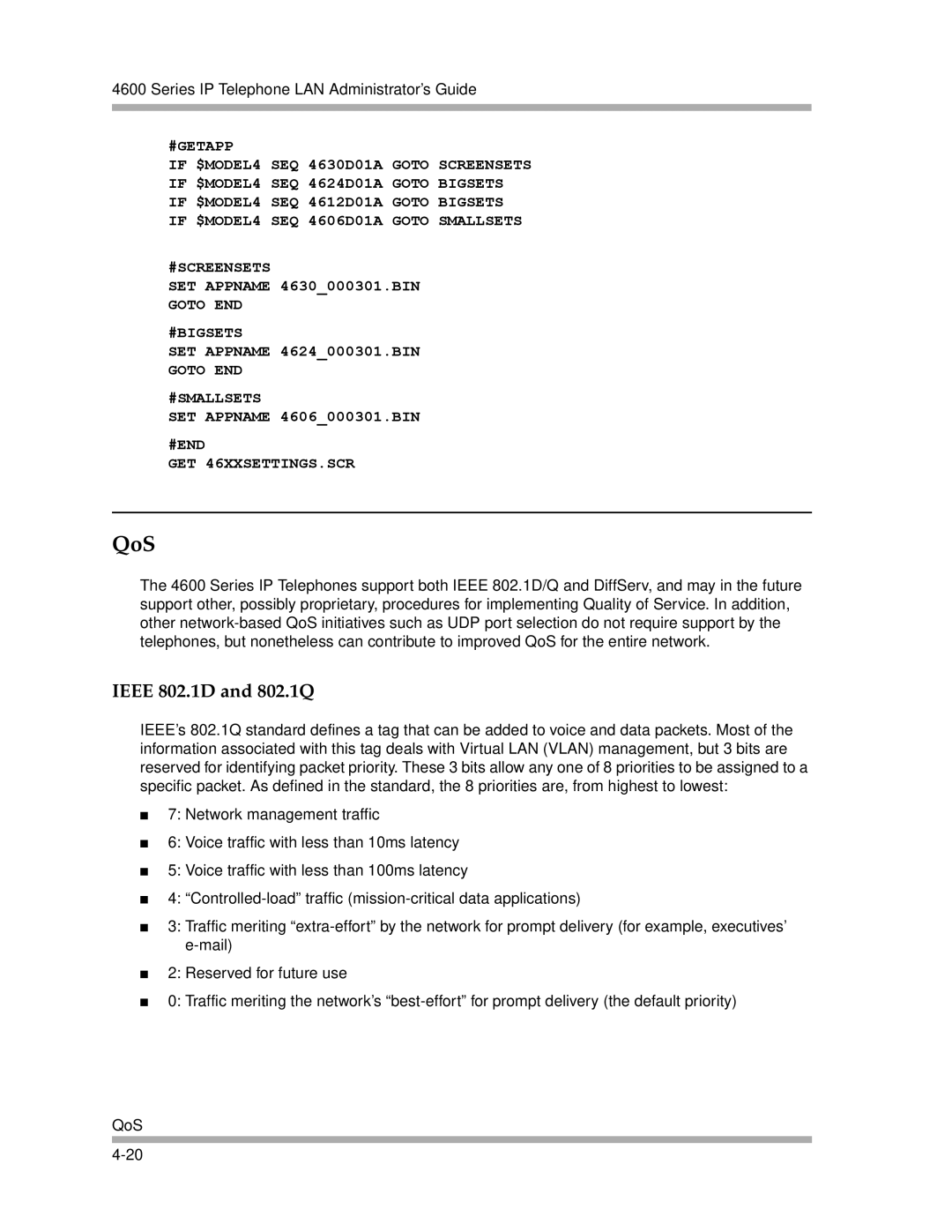
4600 Series IP Telephone LAN Administrator’s Guide
#GETAPP
IF $MODEL4 SEQ 4630D01A GOTO SCREENSETS IF $MODEL4 SEQ 4624D01A GOTO BIGSETS IF $MODEL4 SEQ 4612D01A GOTO BIGSETS IF $MODEL4 SEQ 4606D01A GOTO SMALLSETS
#SCREENSETS
SET APPNAME 4630_000301.BIN
GOTO END
#BIGSETS
SET APPNAME 4624_000301.BIN
GOTO END
#SMALLSETS
SET APPNAME 4606_000301.BIN
#END
GET 46XXSETTINGS.SCR
QoS
The 4600 Series IP Telephones support both IEEE 802.1D/Q and DiffServ, and may in the future support other, possibly proprietary, procedures for implementing Quality of Service. In addition, other
IEEE 802.1D and 802.1Q
IEEE’s 802.1Q standard defines a tag that can be added to voice and data packets. Most of the information associated with this tag deals with Virtual LAN (VLAN) management, but 3 bits are reserved for identifying packet priority. These 3 bits allow any one of 8 priorities to be assigned to a specific packet. As defined in the standard, the 8 priorities are, from highest to lowest:
■7: Network management traffic
■6: Voice traffic with less than 10ms latency
■5: Voice traffic with less than 100ms latency
■4:
■3: Traffic meriting
■2: Reserved for future use
■0: Traffic meriting the network’s
QoS
